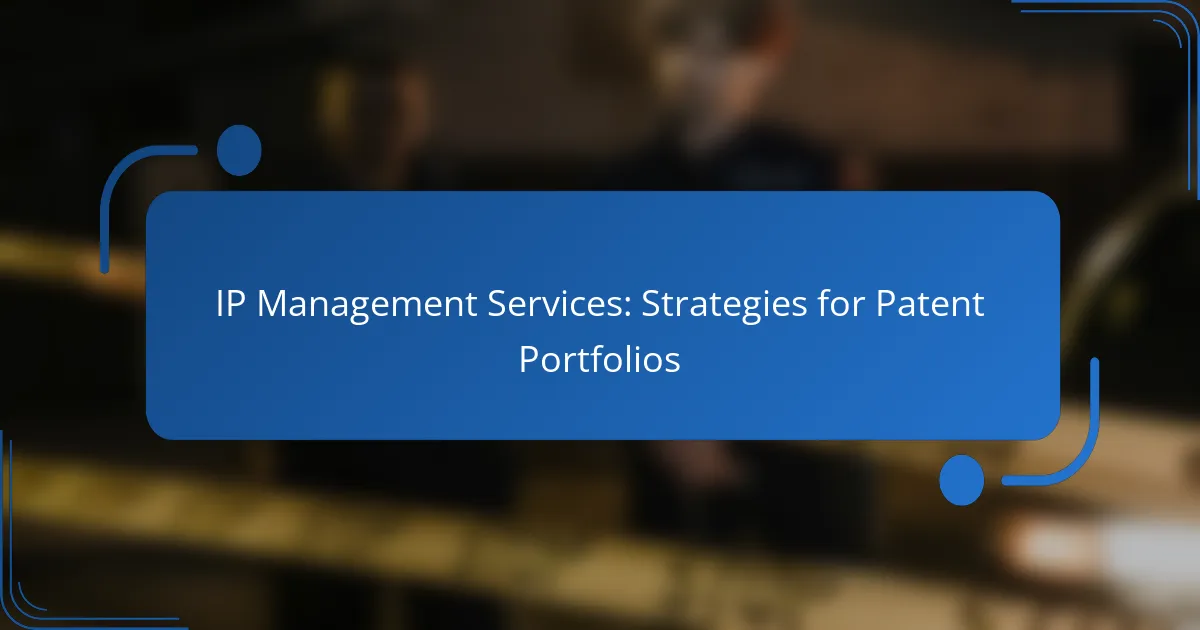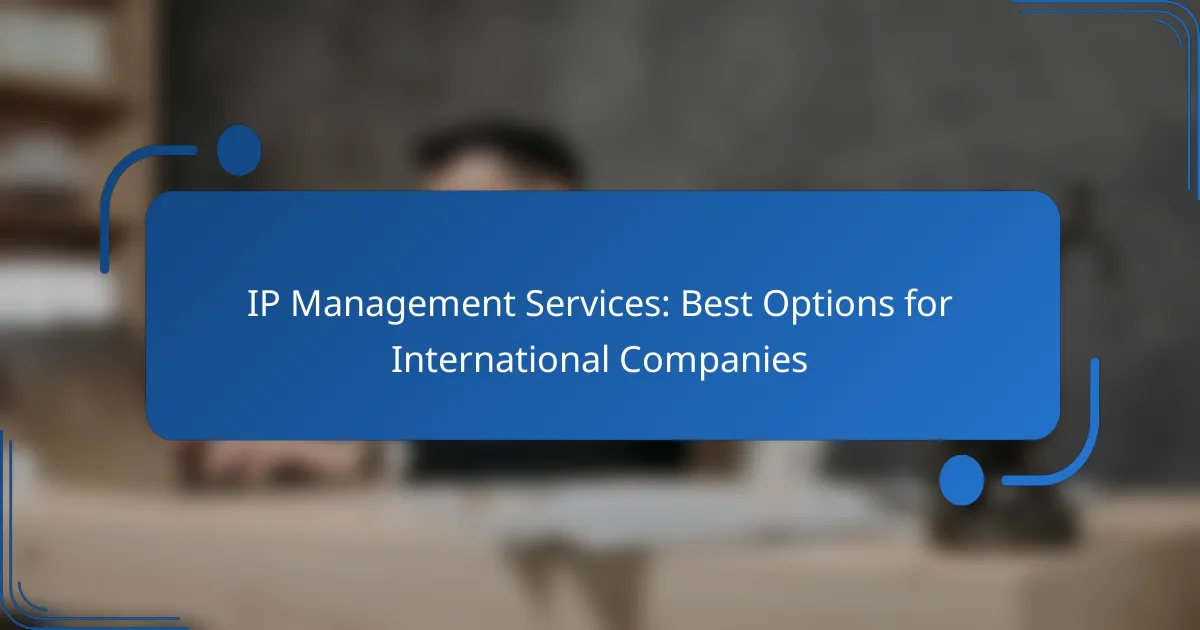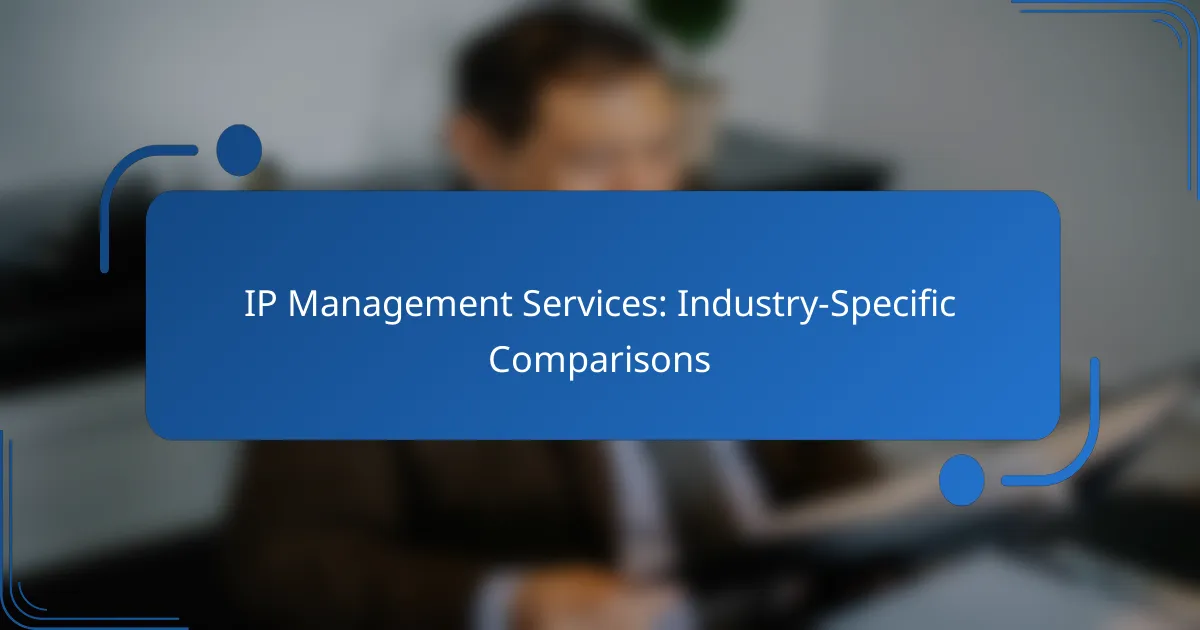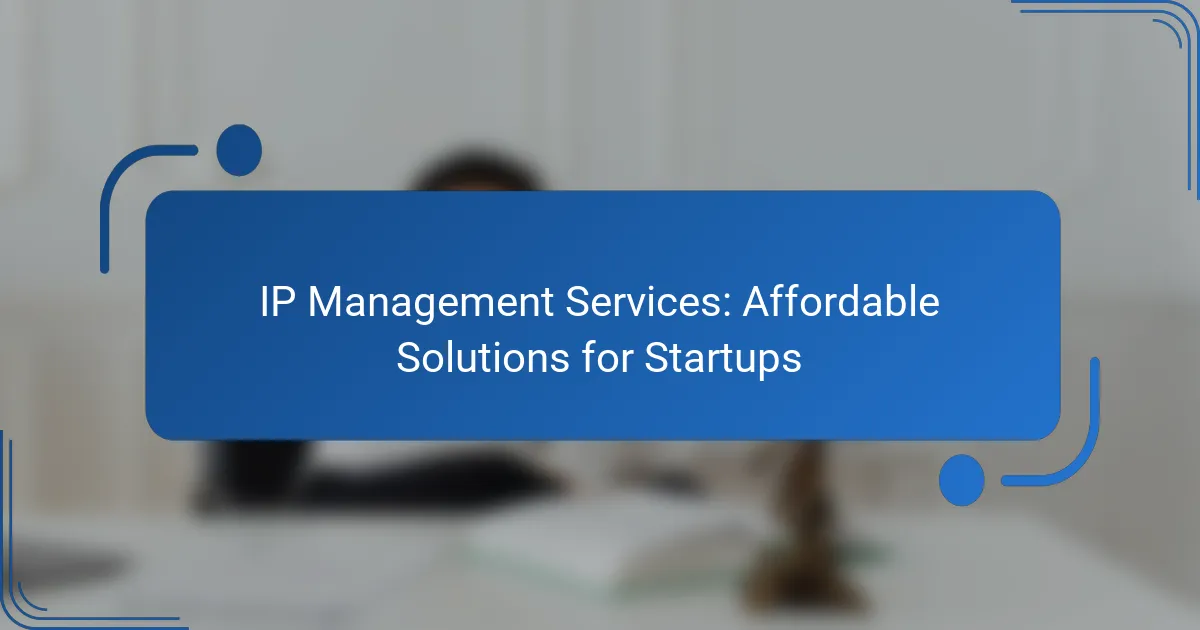Effective management of patent portfolios is essential for organizations seeking to maximize the value of their intellectual property. By implementing strategies such as proactive filing, regular audits, and market analysis, companies can enhance the quality and marketability of their patents, ensuring they remain enforceable and financially viable.

What Are the Key Strategies for Patent Portfolio Management?
Effective patent portfolio management involves several key strategies that help organizations maximize the value of their intellectual property. These strategies include proactive patent filing, regular audits, licensing agreements, market analysis, and risk assessment, each playing a critical role in maintaining a robust patent portfolio.
Proactive patent filing
Proactive patent filing is essential for protecting innovations before they are publicly disclosed. Companies should identify potential inventions early and file patents promptly to secure their rights and deter competitors. This approach often involves setting up internal processes to encourage innovation and capture ideas from employees.
Consider establishing a timeline for filing patents based on product development cycles. For example, aim to file patents at least 6 months before a product launch to ensure adequate protection. Regular brainstorming sessions can also help in identifying new patentable ideas.
Regular portfolio audits
Conducting regular portfolio audits helps organizations assess the strength and relevance of their patents. These audits can identify underperforming patents that may be candidates for abandonment or sale, ensuring that resources are allocated effectively. A thorough audit typically includes evaluating patent expiration dates, market relevance, and potential licensing opportunities.
Schedule audits at least annually and consider using a scoring system to prioritize patents based on their strategic value. This systematic approach can help in making informed decisions about which patents to maintain or divest.
Licensing agreements
Licensing agreements can generate revenue and expand market reach by allowing other companies to use patented technologies. Organizations should explore both exclusive and non-exclusive licensing options based on their business goals. Exclusive licenses may yield higher fees but limit the patent holder’s ability to use the technology themselves.
When negotiating licensing agreements, consider factors such as royalty rates, duration, and geographic scope. A well-structured agreement can provide a steady income stream while also fostering partnerships that enhance market presence.
Market analysis
Market analysis is crucial for understanding the competitive landscape and identifying trends that may affect patent value. Organizations should regularly assess market conditions, competitor activities, and emerging technologies to inform their patent strategy. This analysis can help in prioritizing which patents to enforce or develop further.
Utilize tools like SWOT analysis (Strengths, Weaknesses, Opportunities, Threats) to evaluate how your patents fit into the current market. Keeping abreast of industry reports and attending trade shows can also provide valuable insights into market dynamics.
Risk assessment
Risk assessment involves evaluating potential threats to a patent portfolio, including infringement risks and changes in regulatory environments. Organizations should conduct a thorough analysis to identify vulnerabilities and develop strategies to mitigate these risks. This may include monitoring competitors and staying informed about legal developments in intellectual property.
Implement a risk management framework that includes regular reviews of patent litigation trends and potential challenges in key markets. Establishing a response plan for potential infringement issues can also help protect your intellectual property effectively.
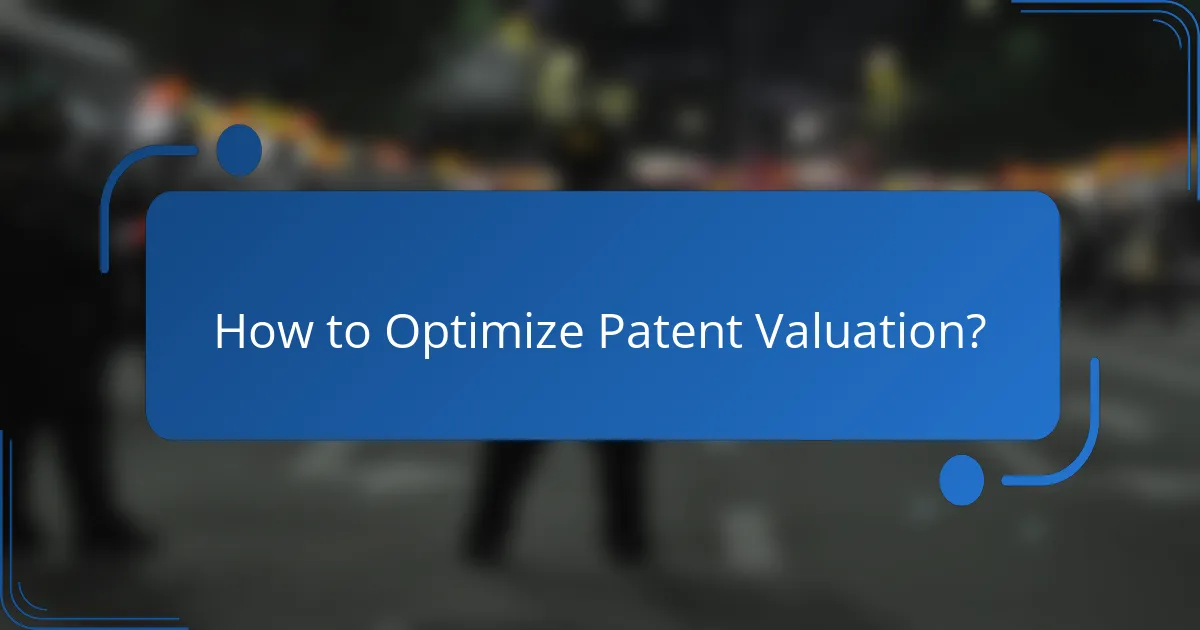
How to Optimize Patent Valuation?
To optimize patent valuation, focus on enhancing the quality and marketability of your patent portfolio. This involves leveraging data-driven insights and aligning your patents with industry benchmarks to maximize their potential worth.
Utilizing patent analytics tools
Patent analytics tools help assess the strength and market relevance of your patents by analyzing trends, citation data, and competitive landscapes. These tools can identify which patents are underperforming and which have the highest potential for monetization.
Consider using platforms like PatSnap or Innography, which provide comprehensive analytics and visualization features. Regularly reviewing analytics can guide strategic decisions, such as whether to maintain, license, or sell specific patents.
Benchmarking against industry standards
Benchmarking your patent portfolio against industry standards allows you to gauge its performance relative to competitors. This process involves comparing metrics such as patent quality, citation frequency, and licensing revenue against similar companies in your sector.
Establishing clear benchmarks can help identify gaps in your portfolio and inform future patent acquisition or development strategies. For instance, if your patents are cited less frequently than industry averages, it may indicate a need for refinement or additional research.

What Are the Best Practices for Patent Maintenance?
Best practices for patent maintenance focus on ensuring that patents remain enforceable and financially viable. This includes timely fee payments and diligent monitoring of patent expiration dates to avoid unintentional lapses.
Timely fee payments
Timely payment of maintenance fees is crucial for keeping patents active. In the United States, for example, maintenance fees are due at specific intervals—3.5, 7.5, and 11.5 years after the patent grant. Missing these deadlines can lead to patent abandonment.
To avoid pitfalls, set reminders well in advance of due dates. Consider using automated systems or patent management software that can track deadlines and send alerts. This proactive approach helps ensure that fees are paid on time, preserving patent rights.
Monitoring patent expiration
Monitoring patent expiration is essential to maintain a competitive edge. Regularly review your patent portfolio to identify patents approaching their expiration dates. This allows for strategic decisions regarding enforcement or potential licensing opportunities before the rights expire.
Establish a schedule for periodic portfolio reviews, ideally annually. This practice helps in assessing the relevance of each patent and deciding whether to invest in further maintenance or let it lapse. Additionally, consider the potential market impact of each patent’s expiration to inform your strategy.

How to Align IP Management with Business Goals?
Aligning IP management with business goals involves ensuring that intellectual property strategies support overall company objectives. This alignment helps maximize the value of patent portfolios while minimizing risks associated with IP mismanagement.
Integrating IP strategy with business strategy
To effectively integrate IP strategy with business strategy, organizations should first identify their core business objectives. This includes understanding market positioning, revenue targets, and competitive advantages. Once these goals are clear, the IP strategy can be tailored to protect innovations that directly contribute to achieving these objectives.
Consider conducting a SWOT analysis (Strengths, Weaknesses, Opportunities, Threats) to evaluate how your IP assets can enhance your business strategy. For example, if a company aims to enter a new market, it should prioritize patents that provide a competitive edge in that specific region.
Stakeholder engagement
Engaging stakeholders is crucial for aligning IP management with business goals. This includes not only internal teams such as R&D, marketing, and legal but also external partners like investors and customers. Regular communication ensures that all parties understand the value of IP and its role in the business strategy.
To facilitate effective engagement, consider establishing a cross-functional IP committee that meets regularly to discuss IP developments and their implications for business goals. This approach fosters collaboration and ensures that IP management is viewed as a strategic asset rather than a mere administrative function.
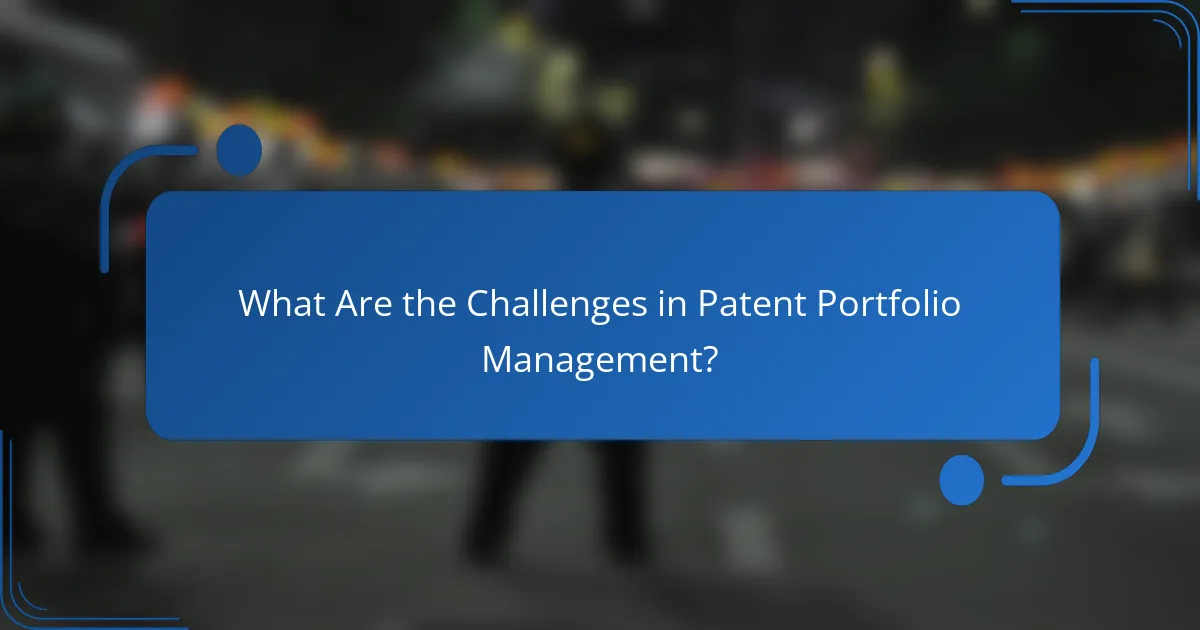
What Are the Challenges in Patent Portfolio Management?
Patent portfolio management faces several challenges that can hinder effective strategy and execution. Key issues include increased competition and changing regulations, which require constant vigilance and adaptability to maintain a strong position in the market.
Increased competition
In today’s fast-paced environment, businesses encounter heightened competition for intellectual property (IP) rights. Companies must continuously innovate and protect their inventions to stay ahead, which can strain resources and require strategic planning.
To effectively manage a patent portfolio amidst this competition, organizations should regularly assess their patents’ value and relevance. This includes conducting market analyses to identify emerging trends and potential threats, allowing for timely adjustments to their IP strategies.
Changing regulations
Patent laws and regulations are subject to change, impacting how companies manage their portfolios. These changes can include shifts in patent eligibility, enforcement practices, and international treaties, which may affect patent rights across different jurisdictions.
To navigate these evolving regulations, businesses should stay informed about legislative updates and engage with legal experts. Regular training for staff on compliance and best practices can also help mitigate risks associated with non-compliance and ensure that patent strategies align with current laws.
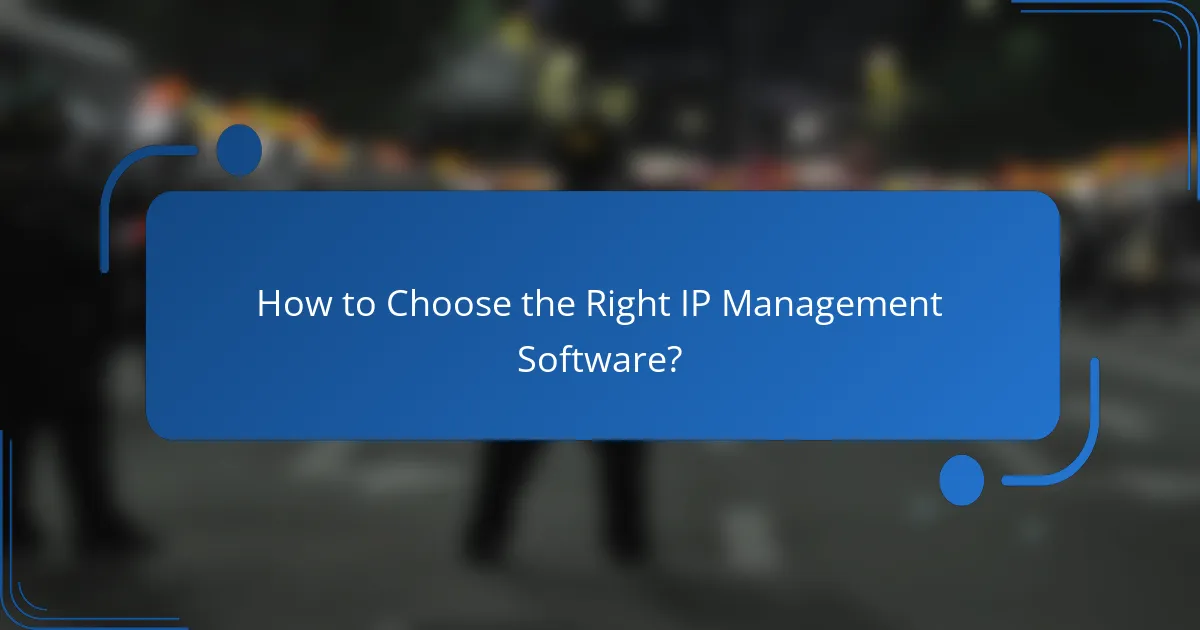
How to Choose the Right IP Management Software?
Choosing the right IP management software involves evaluating features, usability, and scalability to meet your specific needs. Prioritize solutions that streamline patent tracking and portfolio management while ensuring compliance with relevant regulations.
Assessing scalability
Scalability is crucial when selecting IP management software, as it determines how well the system can grow with your organization. Look for software that can handle increasing volumes of data and users without sacrificing performance.
Consider whether the software supports multi-user access and can accommodate additional features as your patent portfolio expands. A scalable solution should allow for easy integration with other systems, such as legal databases or financial tools, to enhance functionality.
When assessing scalability, evaluate the pricing model as well. Some software offers tiered pricing based on the number of patents or users, which can be beneficial for budgeting as your needs evolve. Aim for a solution that balances cost with the ability to adapt to future requirements effectively.
